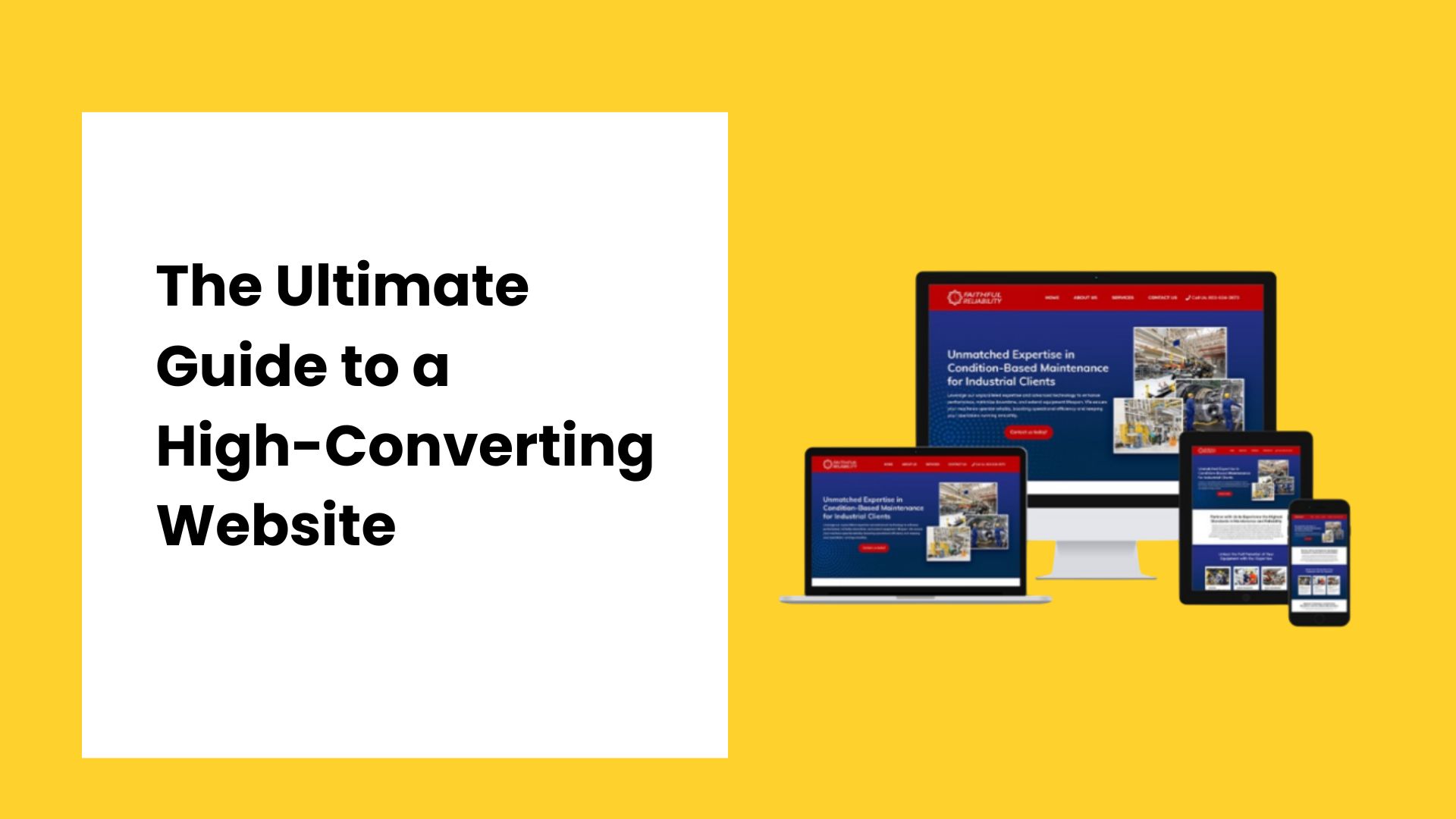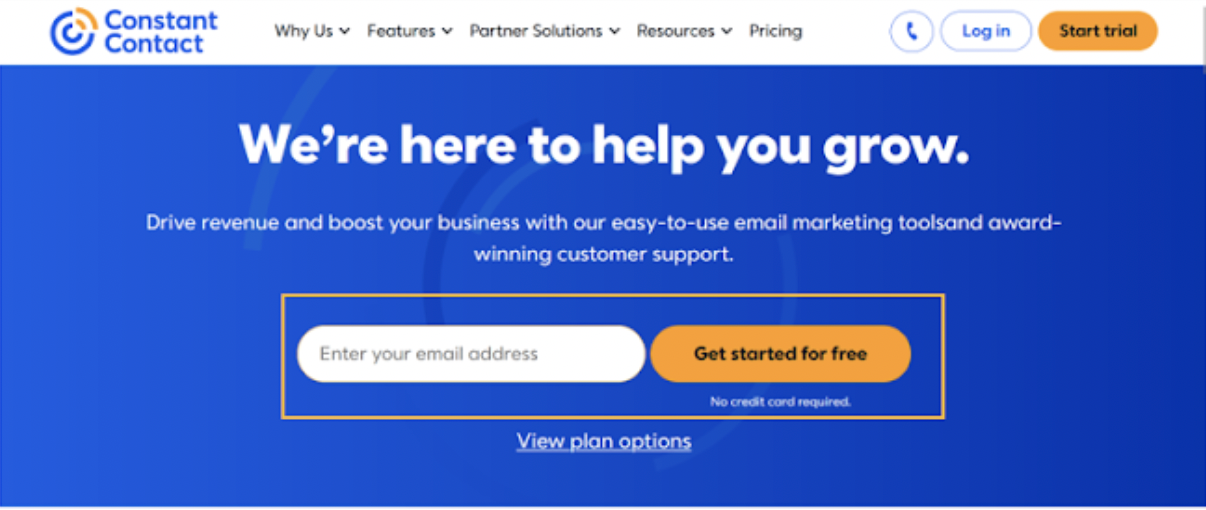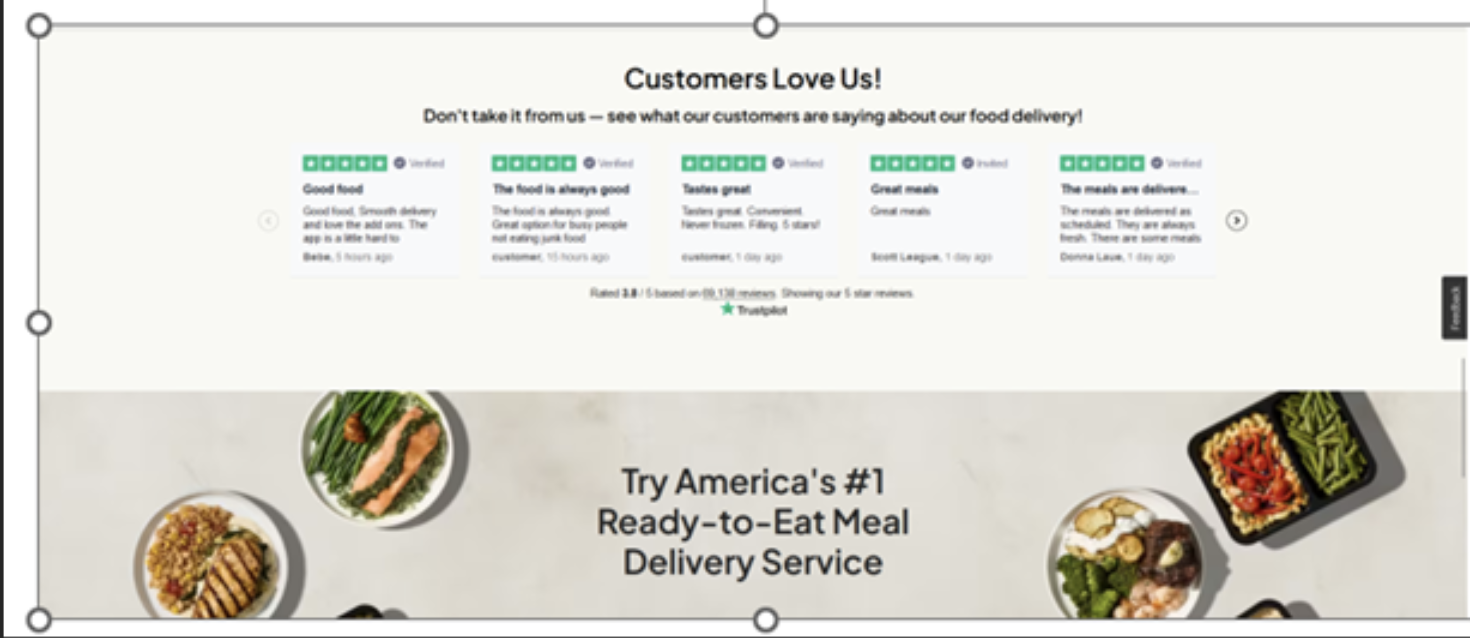
For businesses, a website is one of the most powerful tools for attracting and converting new clients. But simply having a website that looks good isn’t enough—it needs to work hard to convert visitors into customers.
Let’s face it—you spend a lot of time and money marketing your business and directing traffic to your website, only for visitors to leave without converting. That’s a problem. It means you’re leaving money on the table.
The right website can help solve this problem.
Did you know the average website conversion rate is between 1% and 3%? This means that for every 100 visitors, only 1 to 3 will take the desired action (like contacting you or making a purchase). The good news is that with the right strategies, you can significantly increase your conversion rate and turn your website into a lead-generating powerhouse.
In this guide, we’ll break down the key elements of a high-converting website and show you how to use them to generate more leads and drive business growth.
1. Professional and Visually Appealing Design

The first thing a visitor notices when landing on your website is its design. A professional, clean, and visually appealing design helps build trust and keeps visitors engaged.
Why It Matters: A visually appealing design establishes credibility and makes users feel more comfortable interacting with your site. If your website looks outdated or unprofessional, potential clients may question the quality of your services.
Best Practices:
- Use a Clean Layout: Keep things simple with plenty of white space, clear sections, and a hierarchy that guides the visitor’s eye.
- Align Design with Brand: Your website should reflect your brand’s colors, style, and message, ensuring a cohesive experience across all touchpoints.
A professional design aligned with your brand not only makes your site more attractive but also ensures a consistent experience across all platforms.
2. Compelling Headline and Clear Value Proposition

Your headline is the first thing visitors will see when they land on your page, and it should immediately convey what you do and how you can help them.
Why It Matters: The headline sets the tone for your website and establishes whether a visitor will continue reading or bounce away.
Best Practices:
- Be Clear and Direct: Your headline should clearly communicate the benefit of your services. For example, “Get a Website That Attracts Clients and Grows Your Business.”
- Offer a Clear Value Proposition: Let visitors know exactly how your services will solve their problems or improve their situation. For instance, “Custom websites designed to convert visitors into loyal customers.”
A headline like “Website Redesign to Help You Generate Leads” immediately grabs attention and makes visitors want to learn more about how you can help.
3. Clear Call to Action (CTA)

Every high-converting website needs a clear CTA—something that tells visitors what to do next. Without it, your visitors may leave without taking any action.
Why It Matters: A strong CTA encourages visitors to take the next step, whether it’s filling out a contact form, requesting a quote, or scheduling a consultation.
Best Practices:
- Use Action-Oriented Phrases: Examples include “Get Started Today,” “Schedule a Free Consultation,” or “Request Your Free Quote.”
- Make It Visible: Your CTA should be easy to find, appearing above the fold and at key points throughout the site.
Example: A CTA like “Request Your Free Website Evaluation” encourages users to engage without being too aggressive.
4. Trust Signals: Building Credibility

Visitors need to trust your website before they take any action, especially when it comes to sharing personal information or making a purchase.
Why It Matters: When potential customers land on your site, they need to feel confident that they’re in safe hands. Trust signals help reduce skepticism and assure visitors that your site is secure, reliable, and professional.
Effective Trust Signals Include:
- Client Testimonials and Reviews: Display positive feedback from satisfied customers prominently.
- Certifications & Awards: Showcase any certifications or industry awards to further establish credibility.
- Security Badges: For sites handling transactions, display security badges to show that customer data is safe.
Displaying client logos and testimonials on your homepage is a great way to build immediate trust.
5. Compelling Content That Converts

Your website should be filled with compelling, well-written content that speaks to your audience’s needs and interests.
Why It Matters: Engaging content not only helps build trust but also encourages visitors to stay on your site longer, which can improve your search engine rankings and lead to more conversions. In fact, businesses with a blog see 67% more leads than those without one.
Best Practices:
- Write for Your Audience: Focus on your visitors’ pain points and explain how your services can help solve their problems.
- Use Engaging Visuals: High-quality images, infographics, and videos can break up the text and keep visitors engaged.
- Be Clear and Concise: Keep your content easy to read and scannable by using bullet points, headings, and short paragraphs.
A compelling section on your homepage that highlights how your services have helped other businesses succeed can encourage visitors to trust your expertise and take action.
6. Mobile Optimization: Reach Your Customers Everywhere

More than half of web traffic now comes from mobile devices. If your site isn’t optimized for mobile, you’re losing out on a significant number of potential leads.
Why It Matters: A mobile-optimized website ensures that visitors have a seamless experience on all devices. Google also considers mobile-friendliness as a ranking factor, so having a mobile-friendly website can improve your SEO.
Best Practices:
- Responsive Design: Ensure your website automatically adjusts to different screen sizes, from desktops to smartphones.
- Simplified Navigation: Make it easy for mobile visitors to find what they need quickly.
- Fast Load Speed: Mobile users often have slower internet connections, so optimizing for mobile load speed is crucial.
A mobile-optimized website for a service-based business should make it easy for visitors to contact you, schedule an appointment, or view your services—all with just a few taps.
7. Fast Load Speed: No One Likes Waiting
Site speed is a critical factor in both user experience and conversion rates. A slow website can frustrate visitors and lead to high bounce rates.
Why It Matters: Studies show that 53% of mobile users will leave a website that takes longer than 3 seconds to load. Improving load speed can significantly increase your conversion rate.
Best Practices:
- Optimize Images: Compress images without sacrificing quality to speed up loading times.
- Reduce Unnecessary Elements: Eliminate or reduce elements that slow down your site, such as heavy scripts and large files.
- Use Caching: Store elements in the browser’s cache to improve load times for repeat visitors.
Compressing large images on your service pages can reduce load times and prevent visitors from bouncing.
8. Intuitive Navigation: Keep Things Simple

Visitors should be able to easily find what they’re looking for on your website. If the navigation is too complicated, they might leave before taking any action.
Why It Matters: Clear and easy navigation helps visitors move through your site efficiently, leading them to the information or services they need quickly.
Best Practices:
- Simple Menu Structure: Keep your navigation menu organized with clear categories. Aim for no more than 7 main menu items, with the most important options placed at the beginning and end for easy access.
- Search Functionality: Include a search bar so visitors can quickly find what they’re looking for.
- Logical Flow: Structure your pages so that visitors can easily move from one section to the next, guiding them toward your CTA.
Example: A straightforward, well-organized menu on your homepage will help users find your services, portfolio, and contact information without confusion.
9. Answering Frequently Asked Questions (FAQs)

Addressing common concerns upfront can reduce friction and help visitors make decisions faster.
Why It Matters: A dedicated FAQ section helps build trust by answering potential questions and clearing up any doubts visitors may have.
Best Practices:
- Focus on Pain Points: Address the frequently asked questions that your target customers need answered in order to make a decision. If prospects are left with unanswered questions, they are less likely to convert.
- Provide Clear, Concise Answers: Keep your responses easy to read and to the point.
- Use Structured Data: Implement FAQ schema markup to make your FAQs appear in search results.
An FAQ section about your services, pricing, and the process can help visitors make an informed decision, leading them to take action.
10. Practical Website Evaluation Checklist
Now that you know what makes a website high-converting, it’s time to assess your own. Use this checklist to evaluate your site:
- Headline: Does it clearly convey what you do and grab attention right away?
- Value Proposition: Does your website clearly communicate the unique value of your services and why visitors should choose you over competitors?
- Trust Signals: Do you showcase testimonials, certifications, or security badges to build credibility?
- Load Speed: Does your website load in under 3 seconds to avoid losing visitors?
- Mobile Optimization: Does your site function smoothly on mobile devices, offering a seamless user experience?
- Navigation: Is it easy for visitors to find the information they need with intuitive navigation?
- Content: Is your content engaging, compelling, and actionable, clearly communicating your offerings?
- FAQs: Do you address common questions or concerns to help visitors make decisions faster?
Now that you know the key elements of a high-converting website, it’s time to put them into action. By focusing on clear CTAs, compelling content, mobile optimization, and more, you can turn your website into a powerful tool that attracts and converts visitors.
Ready to Boost Your Website’s Conversions?
If you’re ready to transform your website into a high-converting marketing tool, contact us today. Our team specializes in building high-converting websites that transform your business image and results. Let’s work together to create a site that not only looks amazing but also drives results. Get a free quote and consultation.